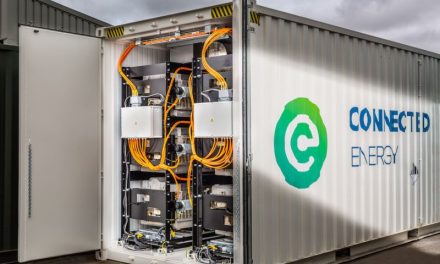By Maximilian Weber, senior vice president of utilities & communications, Hexagon’s Safety, Infrastructure & Geospatial division
The combination of modern-day demands on the grid, disruptive new technologies, and a significant increase in electricity usage over the last few decades is ushering in a wave of new changes and demands for service providers. However, in light of these changes, many utilities are faced with aging infrastructure. To keep up, modernisation is now a necessity.
A rise of demand on the grid
Many sectors are turning towards electrification, but perhaps the most noticeable is the growth in electric vehicles (EVs). With 10 million EVs sold worldwide last year and with sales expected to grow by 35 percent in 2023, the automotive industry’s movement towards electrification is inevitable.
What’s more, with a significant amount of carbon emissions coming from buildings, it’s likely that demand for buildings that are totally powered by electricity – rather than fossil fuels – will only grow in the coming years, further increasing the demand for electricity.
Utilities have already experienced strain on the grid as, just last year, extreme heat waves across Europe forced utilities to limit capacity and import more natural gas despite the use of gas being discouraged for environmental reasons. France, usually an exporter of power, imported natural gas as half of its nuclear capacity was offline for maintenance during rising summer temperatures. Other countries in Europe, such as Spain, also turned towards these unsustainable practices.
However, despite the issues with using resources like natural gas, more sustainable methods such as microgeneration of electricity via rooftop solar panels present their own challenges. For example, while connecting microgeneration sites to the grid can take pressure off the system, especially during peak demand times, utilities must also invest in systems to manage the influx of disparate power sources to the grid.
The importance of modernisation
Being able to meet the demands of disruptive technologies, let alone capitalise on them, requires utilities to invest in other new capabilities. They need real-time insights and intelligence into their networks that will be crucial when it comes to monitoring and managing both the electrical load and the lifecycle of their infrastructure.
Today, many utilities make use of GIS systems to track network assets, but the key network management tool of the digital age is the digital twin – a 3D, geospatial model of the network, assisted by artificial intelligence. The digital twin is a dynamic, digital representation that keeps up with assets in the network accurately, shows the connectivity between those assets in real time, and helps to gauge the potential impact of injected energy coming from external sources such as solar and wind farms.
For example, rather than simply knowing how many transformers and substations are in service, the digital twin offers much deeper insights. It monitors the whole network, from the production centre to every connected consumer. It also gives detailed insights into the capacity and efficiency of the network and, with the help of AI, it can predict the lifecycle of parts, schedule maintenance and aid in design expansions. From high-level operators to workers in the field on mobile devices, everyone has the same common operating picture: an accurate, 24-7 real-time representation of the network.
A modern future
Essentially, if utilities don’t invest in a digital twin of their network, they will only have very limited visibility and won’t operate as efficiently as they otherwise could. Whilst they may have several maps of the network and maintenance and replacement schedules, many of them rely on incomplete and often inaccurate information from outdated paper processes.
By making investments in the latest digital twin technology, utilities will be able to offer far more efficient and cost-effective operations, ensuring an easier integration of external factors such as EVs, electric building and other distributed external sources of energy.





